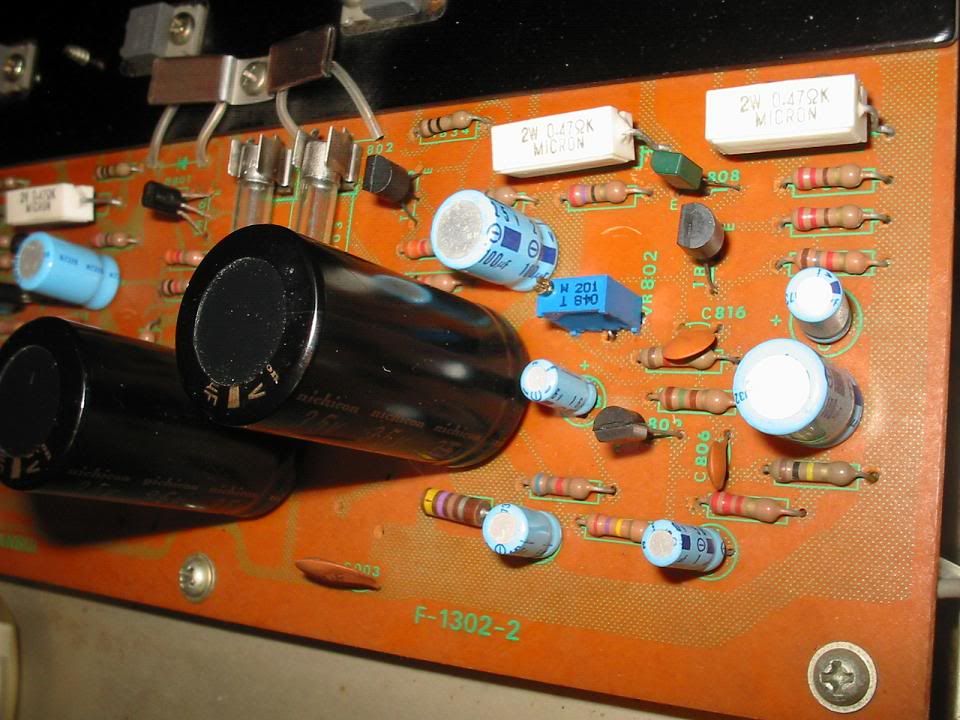I have a Sansui AU-101 amplifier. The amplifier board has two variable 200 Ohm resistors (Q801 and Q802). Does anybody know if they are there to adjust bias? My DC offset is nice at 4mV on each channel but I am curious why they put the VRs there since there is no mention of bias adjustments in the service manual.
Here is a part of the amplifier board schematic with one of the VRs circled:
schematic
Thanks.
Here is a part of the amplifier board schematic with one of the VRs circled:
schematic
Thanks.






